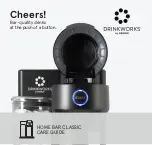
3 — PROGRAMMABLE PARAMETERS
Curtis Model 1351 – December 2018
pg. 32
RPDO
Receive Process Data Object (RPDO). Data received by the Consumer from
Producer communication, (e.g., the master controller receives data from the
slave controller).
RX
Receive. In CANopen, RX (Rx) is from the perspective of the salve controller.
TPDO
Transmit Process Data Object (TPDO). Data transmission by the PDO
Producer to PDO Consumer, (e.g., the slave controller transmits data to the
master controller).
SDO
Service Data Object (SDO). A SDO is a low priority message used to transfer
multiple data sets from a client to a server and vice versa. Several types of
data transfer are available, with the Client (master controller) taking the
initiative for a transfer. The SDO process is used primarily to read or write to
an object index of a Server (slave controller). A SDO is used for configuring
the 1351 system controller via the CAN network. The contents of the data set
are defined within the Object Dictionary.
SSDO
Server-SDO. Owner of the Object Dictionary (e.g., the slave controller).
Server to Client communication.
TX
Transmit. In CANopen, TX (Tx) is from the perspective of the salve
controller.
CSDO
Client-SDO. Client to Server communication. SDO Download: Through this
service the client (i.e., the master) of a SDO downloads data to the server
(i.e., the salve, which is the owner of the Object Dictionary). SDO Upload:
Through this service, the client of an SDO uploads (reads) data from the
server.
VCL
VCL is the unique Curtis Vehicle Control language. VCL provides the
application level programmability to customize the usage, or allow Curtis
controllers to perform as ‘vehicle managers’ eliminating the need for costly,
additional system controllers. See our website: Curtis Vehicle Control
Language (VCL). Note, for migrating applicable VCL to the 1351, contact
the Curtis distributor where you obtained your controller or the Curtis sales-
support office in your region.
SDO Write Message
To retain parameter values in non-volatile memory (NVM) that are sent by standard CANopen SDO
write messages (such as from a different controller or module), a non-zero value must be written to
SDO_NVM_Write_Enable
(Object Index 0x2008, sub-index 0x00) before changing parameter values.
This will have the parameter changes written to non-volatile memory.
Note that having the
SDO_NVM_Write_Enable
set to zero only saves the parameter changes to
ephemeral (RAM) memory.
Note that CSS and the 1313HHP programmers automatically force all changes to be stored into non-
volatile memory regardless of the SDO NVM WRITE Enable setting.
















































